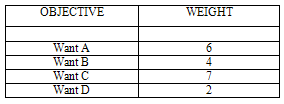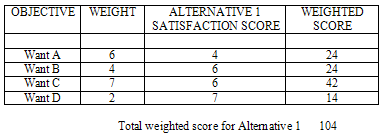Kepner Tregoe Decision Making
The Steps, The Pros and The Cons
What is it?
Kepner Tregoe decision making is a structured methodology for gathering information and prioritizing and evaluating it. It was developed by Charles H. Kepner and Benjamin B. Tregoe in the 1960s.
This is a rational model that is well respected in business management circles. An important aspect of Kepner Tregoe decision making is the assessment and prioritizing of risk.
So the idea is not to find a perfect solution but rather the best possible choice, based on actually achieving the outcome with minimal negative consequences. It is marketed as a way to make unbiased decisions in that it is said to limit conscious and unconscious biases that draw attention away from the outcome.
There are four basic steps when using the Kepner Tregoe decision matrix:
- Situation appraisal - is used to clarify the situation, outline concerns and choose a direction
- Problem analysis - here the problem is defined and it's root cause determined
- Decision analysis - alternatives are identified and a risk analysis done for each
- Potential problem analysis - the best of the alternatives is further scrutinized against potential problems and negative consequences and actions are proposed to minimize the risk.
Following the step-by-step approach of Kepner Tregoe decision making allows for the use of critical thinking skills in considering many possible factors that may be vital in making the decision.
Kepner Tregoe decision analysis
- Prepare decision statement
- includes not only the desired result but also the action required
- Define:
- Strategic requirements - 'must haves'
- Operational objectives - 'want to haves'
- Restraints - limits in the system - Rank the objectives and assign relative weights
- List alternatives
- Generate as many potential courses of action as possible whether immediately feasible or not
- Score each alternative
- Firstly, eliminate any alternative that does not fit the 'must haves'.
- Going through each alternative one by one, rate it against each Want on a scale of 1 to 10.
- Next, multiply the weight of the objective by the satisfaction score to come up with the weighted score. - Choose the top two or three alternatives and consider potential problems or negative effects of each
- Consider each alternative against all of the negative effects
- One at a time again, rate alternatives against adverse effects, scoring for probability and significance - Analyze the weighted score versus the adversity rating for each and choose the high-scoring one.
- Consider the winning option against each negative consequence and suggest a plan of action to minimize the adverse effects.


- Repeat this for each alternative

Pros and cons
This step-by-step, systematic approach makes it easy to do the Kepner Tregoe decision analysis. It can be very useful where there are many potential options to consider as well as many possible unwanted effects. Built into it is the ability to minimize some of these negative effects.
Although it is offered as an unbiased decision matrix, somebody has to decide the relative importance of the objectives, the probability of occurrence of adverse reactions and the relative significance of each of these reactions. It's difficult to believe that there won't be any bias in there whatsoever!
Kepner Tregoe decision making sets up an outcome as well as how exactly it should be achieved. This is often problematic because the universe often has other plans! You can have one or the other, not usually both.
This decision making model deals with this only by troubleshooting at the end of the process.
It may also take considerable time to get through this process. Much patience and determination may be required!
Other ideas
This is only one of the many decision making tools and techniques available for business type decisions.
And Kepner Tregoe decision making is not considered to be how humans naturally do their decision making...
Like this page?
Mind Control
You have probably noticed that I am moving the whole Mind Control section to a new site. Please excuse any inconvenience.
This is the new site www.pschobegone.com. Feel free to come and visit. Any suggestions will be gratefully received!